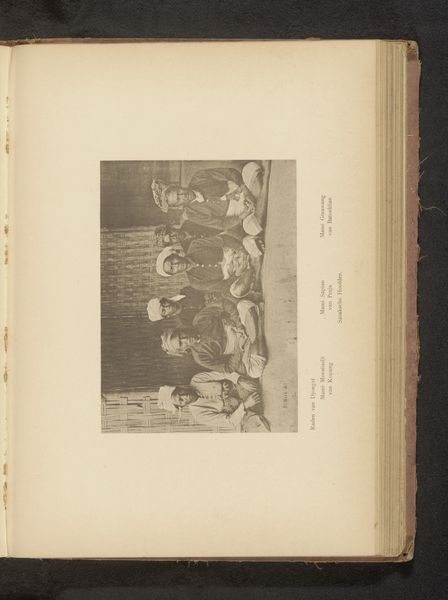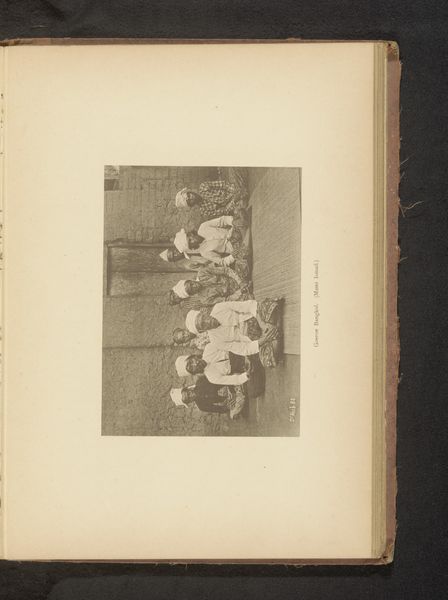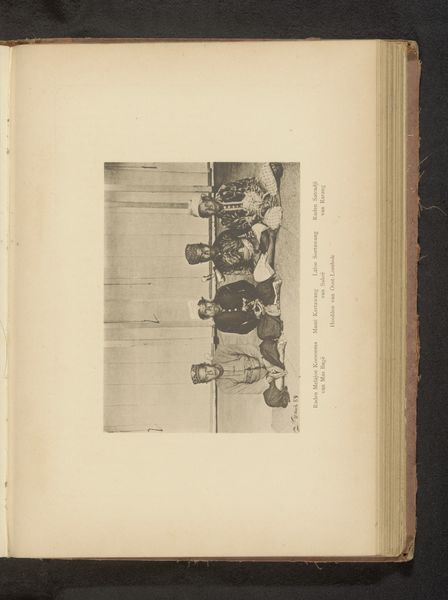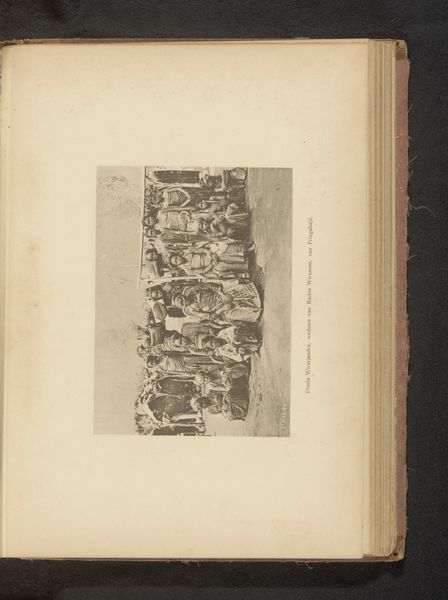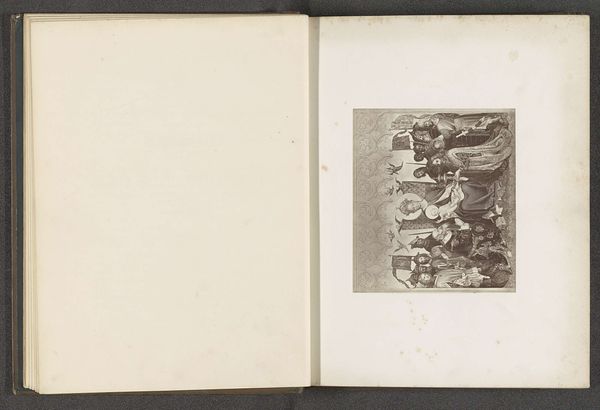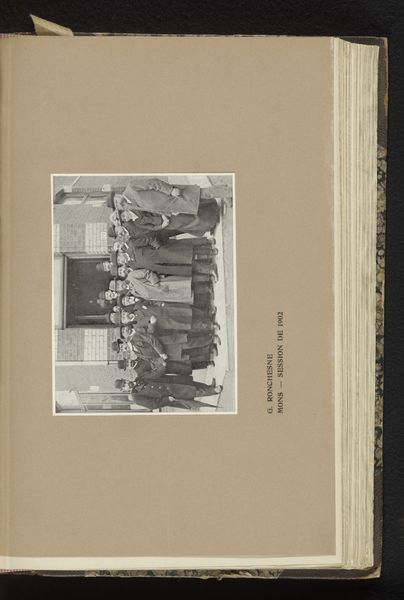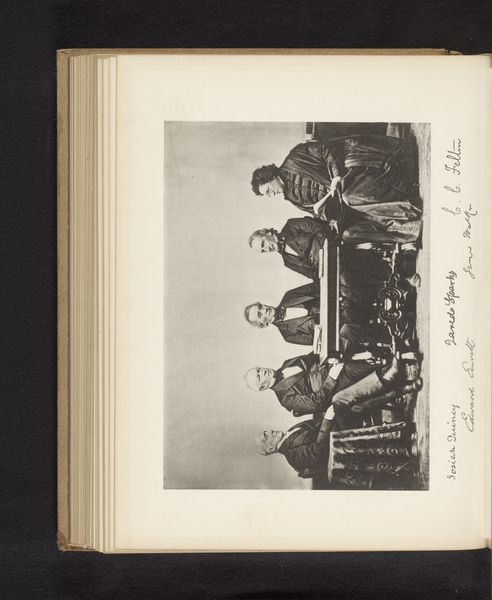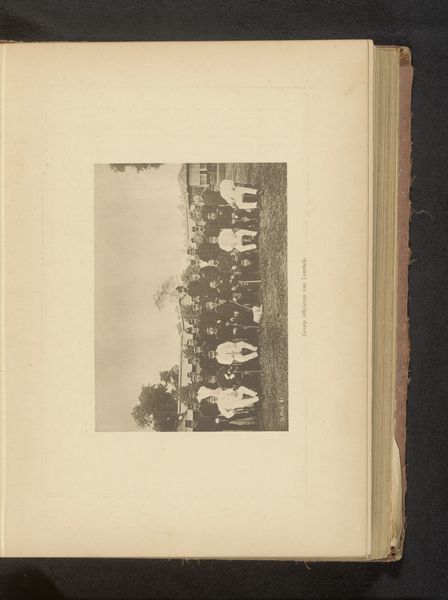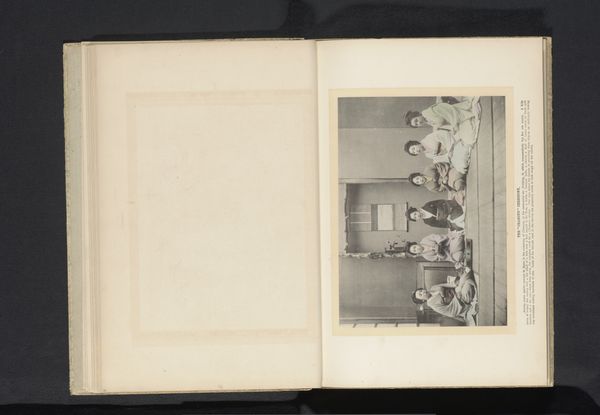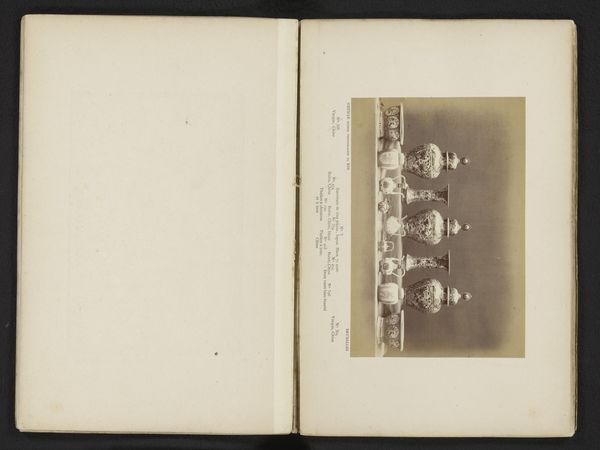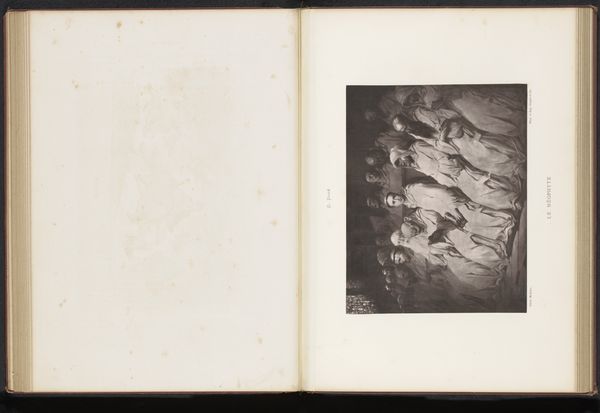
photography, gelatin-silver-print
portrait
photography
gelatin-silver-print
genre-painting
Dimensions: height 123 mm, width 171 mm
Copyright: Rijks Museum: Open Domain
Editor: This gelatin-silver print, titled "Groep onbekende mannen," which translates to "Group of Unknown Men," was taken by Christiaan Johan Neeb sometime before 1897. The sepia tone gives it an antique feel, almost like looking into the past. It has such a documentary style to it, what stands out to you? Curator: For me, this image sparks questions about the politics of representation. Photography in the late 19th century was still developing its role. Who gets photographed, and how, reflects existing power structures. Here, we have a group of men, presumably from a particular social group, rendered anonymous by the title. Editor: Anonymity seems a curious choice given that portraiture was, even then, about visibility and often status. Curator: Exactly! It makes you wonder, doesn't it? Were these men considered a generic 'type' rather than individuals? What does it tell us about how people of their social standing were perceived and documented at the time? The very act of categorizing them as an 'unknown group' frames them in a specific social context. Perhaps this was anthropological in nature? Commissioned by a colonizing force? Editor: That's a chilling point. Their collective anonymity hints at potential social dynamics. Given the colonial history of the time, that adds another layer of meaning. Were they intentionally made ‘othered’ through this lens? Curator: It's plausible. Visual imagery has historically been used to construct and reinforce social narratives. Think about the evolution of ethnological museums that showed such imagery; what assumptions do people project? Editor: That really shifts my perception of what at first seemed a simple, if dated, portrait. This photo challenges us to think about visibility, representation, and how institutions, and even individuals, shape our understanding of history. Curator: Indeed, it prompts us to analyze whose stories get told and how, and what voices may have been excluded, or subsumed, through time. A photograph, a powerful, yet subjective, artifact.
Comments
No comments
Be the first to comment and join the conversation on the ultimate creative platform.
